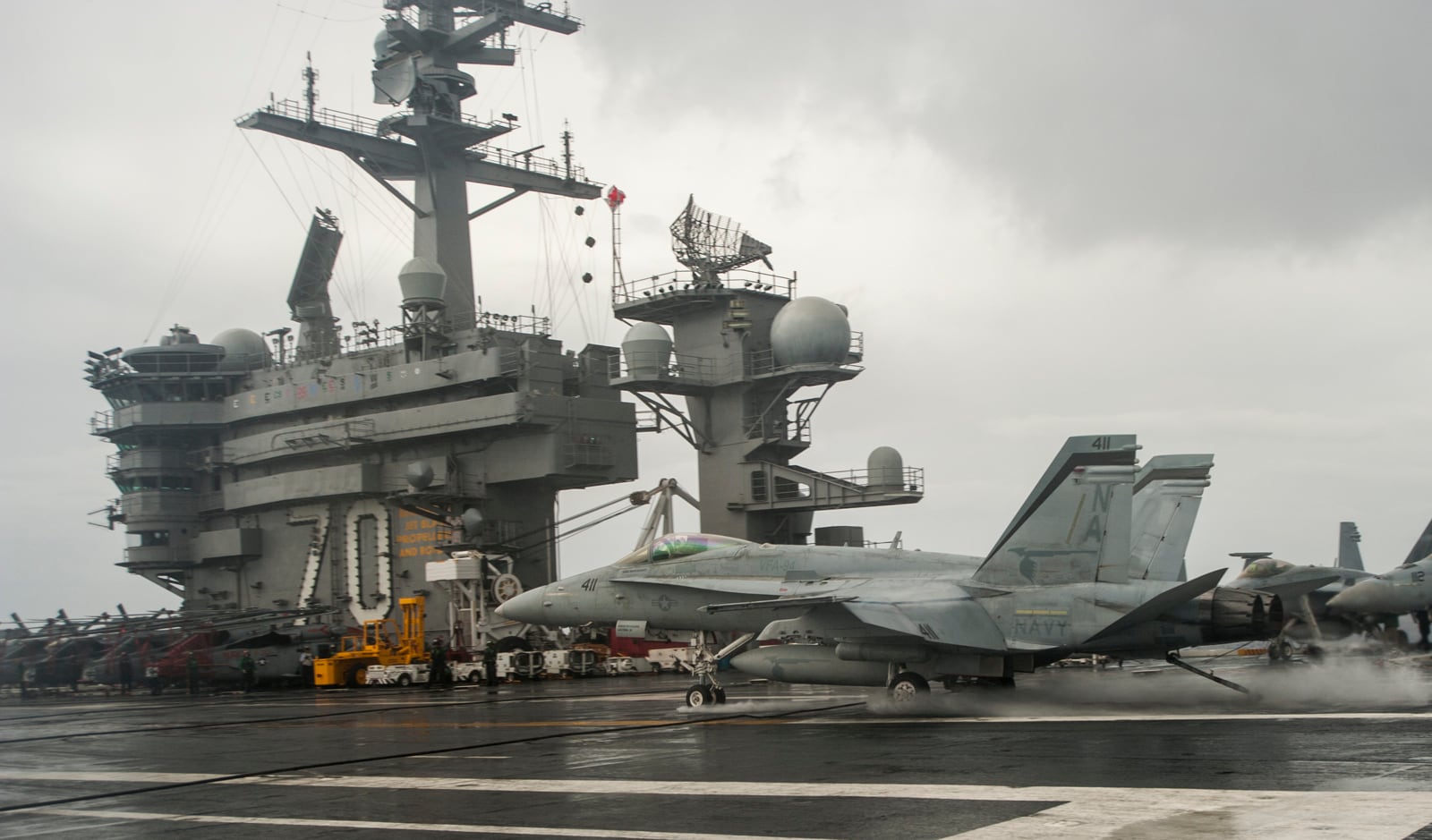Pilot Lt. Nate Poloski's untimely death over the Pacific last year has been ruled an accident, but a command investigation into the fatal crash offers few answers about why he collided with another aircraft that day.
Poloski's F/A-18C Hornet collided with another fighter west of Wake Island on Sept. 12, 2014, minutes after taking off from the aircraft carrier Carl Vinson, according to the report released April 28.
The other pilot, whose name was redacted from the report for privacy reasons, ejected safely, but only Poloski's helmet was found after his jet plunged into the ocean.
The 26-year-old Naval Academy graduate, from Lake Arrowhead, California, was serving his first tour, with Strike Fighter Squadron 94 out of Naval Air Station Lemoore, California.
In his endorsement of the investigation, the chief of Naval Air Forces called the mishap an accident, blaming a lapse in situational awareness.
"While there is no definitive evidence to suggest either pilot's [situational awareness] or lack thereof directly contributed to this incident, greater SA by all parties may have prevented the collision," Vice Adm. Mike Shoemaker wrote.
The investigator, whose name was redacted, recommended that pilots rely on their own eyesight to maintain situational awareness, rather than leaning on their cockpit technology to tell them when they're flying too close to another aircraft.
Additionally, the report recommends an examination of communication procedures for operating around a carrier, to limit distractions. Currently, pilots need to check in and out on several frequencies after takeoff.
"The perceived rush to check in and out on all frequencies can be a distraction to pilots on Case I departures and arrivals," the investigator wrote.
Aside from the last few moments before the crash, the report found that both the pilots and the aircraft were in fine working order before takeoff that day.
Poloski had about 455 flight hours under his belt, with 221 in the Hornet. He was considered a competent pilot and had no outstanding medical issues on record. Witnesses said he was well rested and not obviously stressed.

An F/A-18C Hornet from the Mighty Shrikes of Strike Fighter Squadron 94 lands on the aircraft carrier Carl Vinson four days after a pilot from the squadron was killed in a collision. Carl Vinson and its embarked Carrier Air Wing 17 were on deployment in U.S. 7th Fleet, supporting exercise Valiant Shield.
Photo Credit: MC2 John Philip Wagner Jr./Navy
They said the same about the O-5 who took off just before him, whose name was redacted to protect his privacy. His flight hours totaled more than 2,400, with more than 2,100 in the Hornet.
Poloski was scheduled for an hour-and-a-half flight that evening to drop six inert bombs then finish with a night trap. The commander was scheduled to conduct a war at sea exercise.
They took off at 5:36 and 5:37 p.m., respectively. Within minutes of takeoff, Poloski turned his aircraft west and decelerated, hitting the other Hornet at 5:40.
In his statement, the commander said he didn't know he'd been hit, that he only felt a thump on his left engine. When he lost control and noticed a fire heading for the cockpit, he ejected and was safely recovered by an MH-60S helicopter.
Witnesses said they saw two objects on fire descending for several thousand feet before hitting the water in two places, later determined to be 9.5 nautical miles apart.
The helicopter crew recovered Poloski's helmet around 8:00 p.m. Multiple cracks, a broken strap and a hole in the casing suggested he died of massive head trauma, the report said.
His remains were never recovered, despite air and surface assets covering 3,000 square miles during search-and-rescue attempts.
"Nathan was an outstanding person, naval officer and aviator," said Cmdr. Michael Langbehn, commanding officer of VFA 94, said in a statement Sept. 14. "My personal thoughts and prayers are for his family, friends and shipmates as they endure this immeasurable loss."
Meghann Myers is the Pentagon bureau chief at Military Times. She covers operations, policy, personnel, leadership and other issues affecting service members.





